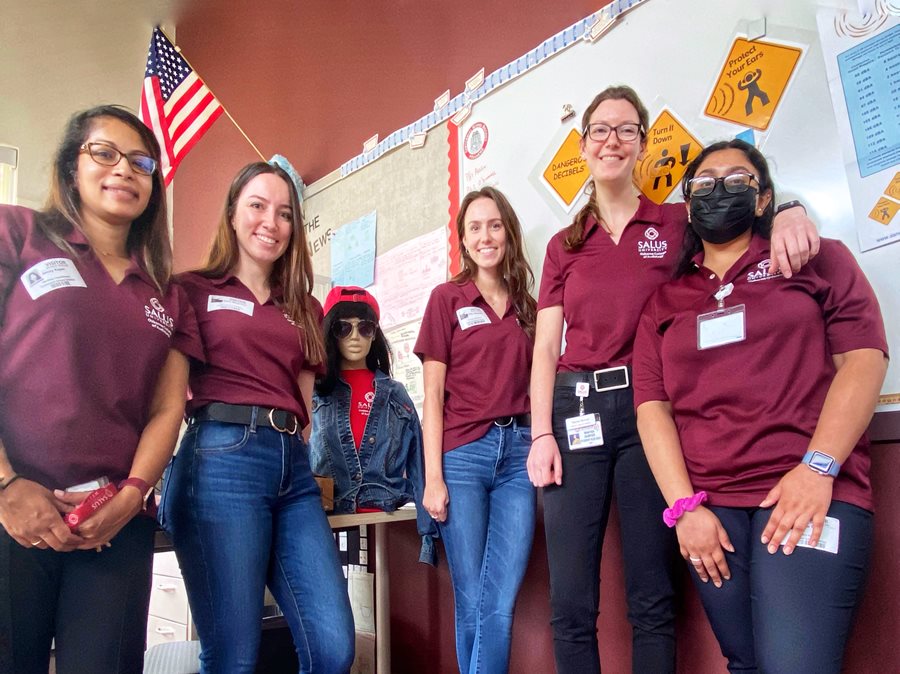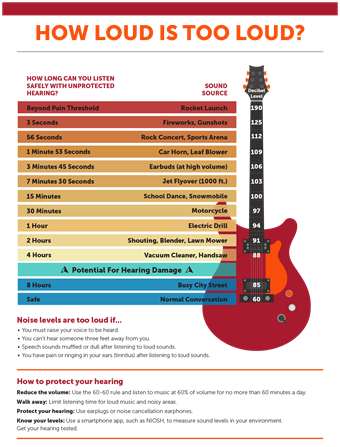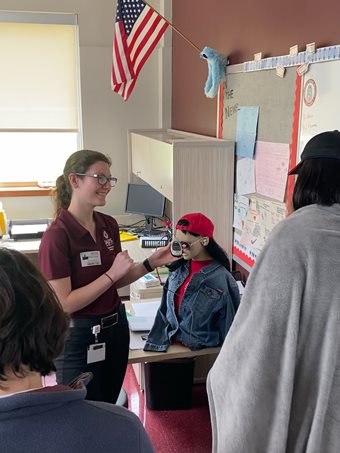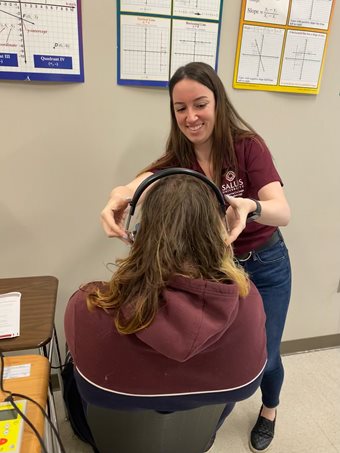
Jenny Rajan, AuD '09, CCC-A, FAAA, has wanted to engage in a specific community outreach and education program for a while now, but those aspirations were stifled by pandemic restrictions.
 But as in-person events ramp back up, Dr. Rajan, assistant professor in the University’s Osborne College of Audiology (OCA), was finally able to venture into the community. In what she hopes is her first of many community outreach efforts, Dr. Rajan, with the help of four OCA students, delivered the “Dangerous Decibels” educational program to high schoolers in the Centennial School District on May 26, 2022.
But as in-person events ramp back up, Dr. Rajan, assistant professor in the University’s Osborne College of Audiology (OCA), was finally able to venture into the community. In what she hopes is her first of many community outreach efforts, Dr. Rajan, with the help of four OCA students, delivered the “Dangerous Decibels” educational program to high schoolers in the Centennial School District on May 26, 2022.
The high school students learned to recognize safe and dangerous sound levels and exposure time, created models of anatomical structures related to hearing, learned ways to protect their hearing from hazardous sounds and measured the output of their own personal music listening device. The Doctor of Audiology students also provided the high schoolers with hearing screenings and information about the audiology profession.
The program consisted of many engaging and informative activities, but there were definitely some favorites among this group of high schoolers.
 After discussing dangerous decibel levels, the students were asked to set their headphones to a comfortable volume. They then placed their headphones on a mannequin that had a decibel measure to show the students how their headphone volumes compared to dangerous decibel levels. According to Dr. Rajan, the students were particularly engaged in this interactive lesson and were surprised by the results.
After discussing dangerous decibel levels, the students were asked to set their headphones to a comfortable volume. They then placed their headphones on a mannequin that had a decibel measure to show the students how their headphone volumes compared to dangerous decibel levels. According to Dr. Rajan, the students were particularly engaged in this interactive lesson and were surprised by the results.
Another lesson had the students use pipe cleaners to represent hair cell movement in response to different sounds. When exposed to an extremely loud sound like fireworks, for example, some pipe cleaners would bend and stay bent. This acted as a visual and tactile representation of the irreversibility of hearing damage, according to Dr. Rajan.
Audiology student Sabila Rana ‘24AUD said the high schoolers were “super engaged” and “asked a lot of questions” during the lessons. The students were engaging with the materials and “relating it to their own lives,” according to student Shayna Sawyer ‘24AUD. Finally, Kerry Mcgovern '24AUD, said they seemed "surprised by the information" they were learning.
Although learning about dangerous sound levels is important for everyone, all of the OCA students acknowledged how the Dangerous Decibel program is particularly relevant and useful for high school students. High school students “always seem to have something playing in their earbuds” and are exposed to loud noises consistently in their environment (concerts, sports games, etc.), said Sawyer.
 Moreover, Rana said that high school students are old enough to really understand the importance of hearing loss prevention and also young enough to change their habits in order to preserve their hearing before it’s too late.
Moreover, Rana said that high school students are old enough to really understand the importance of hearing loss prevention and also young enough to change their habits in order to preserve their hearing before it’s too late.
Although Dr. Rajan acknowledged that they do not have the ability to measure behavioral change, she was confident that the students' attitudes toward hearing loss prevention certainly changed because of the student engagement and the proven efficacy of the program.
Dr. Rajan, with help from the OCA students, will continue to spread awareness and educate the public about the importance of hearing loss prevention. In the meantime, she would like all of us to remember that hearing loss is preventable but it is not repairable so we all must be cognizant of the sounds we are exposed to daily.